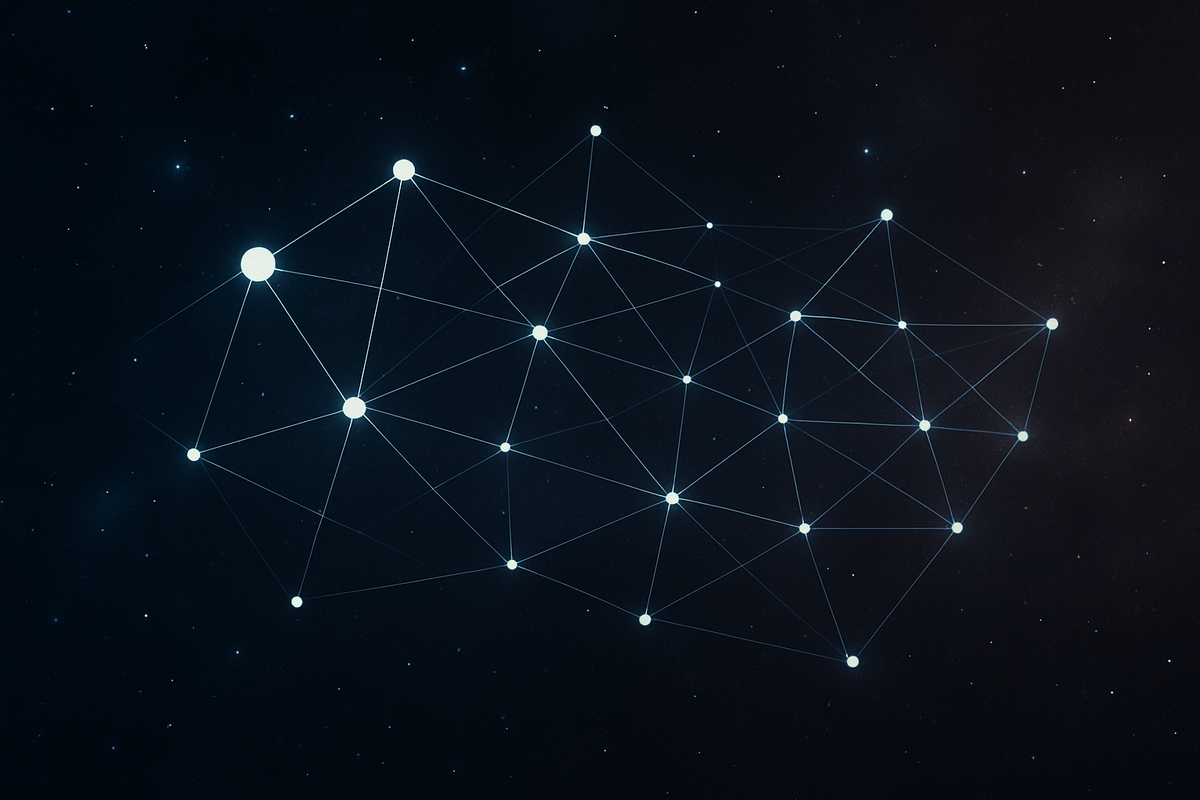Emergent Spacetime

In modern physics, a quiet revolution has been unfolding: the idea that space and time—the backdrop to everything—might themselves be emergent. Rather than being fundamental ingredients of the universe, geometry and duration may arise from patterns of relation, much as temperature emerges from the motion of countless molecules. According to this view, spacetime is not the stage on which the universe plays out, but a structure that congeals from the mutual consistency of deeper, pre-geometric elements.
The field known as emergent spacetime explores this possibility from many angles. In holography, for instance, the geometry of a region of space can be reconstructed from networks of quantum entanglement living on its boundary. In causal-set theory, spacetime appears as a web of elementary events ordered by cause and effect, its smoothness emerging only when countless such events are coarse-grained. Loop-quantum and group-field models build geometry from discrete quanta of area and volume, while computational approaches imagine space and time as the evolving pattern of an information-processing network. Across these very different frameworks runs a common intuition: that the universe’s fabric is woven from relationships, not coordinates.
The Science & Philosophy Institute contributes to this conversation through a framework we call Variety–Coherence Optimization. The idea begins not with points in space or instants in time, but with minimal informational units—bare relational entities capable of forming or failing to form coherence with one another. Each seeks to maximize its variety—its distinctiveness—while preserving local compatibility. This delicate balance between difference and agreement acts as a generative principle. When enough relational elements align coherently, they form a stable “patch,” a tiny island of mutual consistency within an otherwise undifferentiated sea of possibility. These patches behave like the primitive seeds of order: they stabilize, link, and propagate coherence forward. Their ancestry defines a direction, an irreversible record that becomes the arrow of time.
At a critical point, the internal coherence of each patch saturates. Beyond that threshold, its relational structure can no longer be expressed in the same informational language—it must transform. Through a kind of mathematical translation, its internal phase relationships are projected into spatial form by a Fourier-like duality. What had been oscillations of coherence become positions in emergent space. Distance, in this picture, measures not how far apart things are, but how differently they vibrate in the field of information. Space and time are revealed as complementary aspects of coherence: space as its spectral image, time as its memory.
This relational view unites insights from holography, causal sets, and computational physics under a single principle: that the universe organizes itself by balancing diversity with harmony. In this sense, spacetime is the ultimate compromise between freedom and order—a self-consistent geometry born from the push and pull of information striving simultaneously to differentiate and to agree. The cosmos, seen through this lens, is not set within spacetime; it becomes spacetime through the ceaseless optimization of coherence.